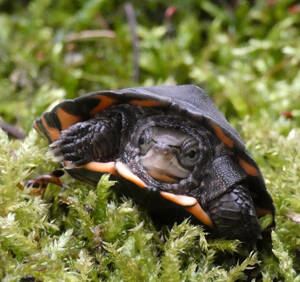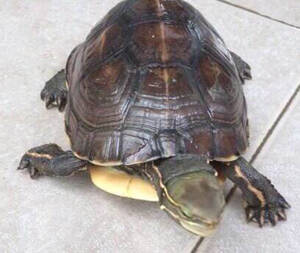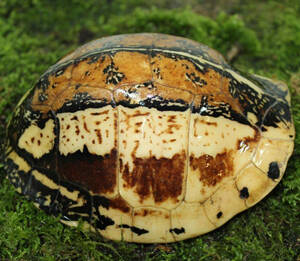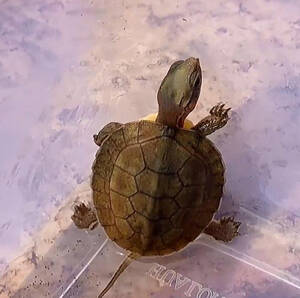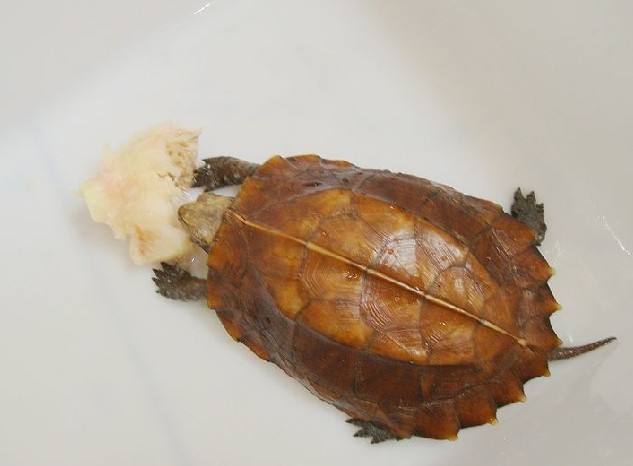Mauremys mutica
IUCN
LCBasic Information
Scientific classification
- name:Mauremys mutica
- Scientific Name:Mauremys mutica,Stone turtle, stone golden coin turtle, water turtle, yellow turtle, fragrant turtle
- Outline:Testudines
- Family:Testudinata Testudinidae Pseudoterra
Vital signs
- length:
- Weight:
- lifetime:50years
Feature
The individual is medium-sized, flat and oval in shape, with a small head. The back of the head is smooth and scaleless, yellow or yellow-olive in color, and the ventral side of the head and throat are yellow, hence the name.
Distribution and Habitat
In China, it is distributed in Hainan, Guangdong, Guangxi, Yunnan, Fujian, Hunan, Hubei, Jiangsu, Anhui, Zhejiang, and Taiwan. Abroad, it is distributed in Vietnam.
Aquatic, living in rivers, streams, shrubs, etc.
Appearance
The head is small, the top of the head is smooth and scaleless. The carapace is flat, with a distinct central ridge, weak side ridges on both sides, and a slightly serrated edge at the back. The front edge of the plastron is upturned, and the rear edge is deeply notched. The limbs are flat and the tail is thin and short. The top of the head is green olive or gray olive, with a light yellow vertical stripe from behind the eye socket, inlaid with black stripes, extending along the upper edge of the tympanic membrane to the neck. The carapace is brownish yellow, with a black or dark brown central ridge. The plastron is light yellow, with black spots on each shield.
Details
The yellow-throated water turtle lives in the waters of hilly areas, mountain basins in semi-mountainous areas, and river valleys. Sometimes it also often moves in bushes and rice fields. During the day, it mostly plays and forages in the water. On sunny days, it likes to be on land, and sometimes crawls to the shore to bask in the sun. When the weather is hot, it is more active in the morning and after dusk. At noon and at night, it often hides in the water, in the dark, or buried in the sand, shrinking its head and not moving. From the end of April to the beginning of October every year, the activity is large, and the optimal environmental temperature is 18-32℃. 13-15℃ is the transition stage from the southern activity state to the hibernation state of the turtle. The turtle enters hibernation at about 10℃. At 35-36℃, it is not adapted or dormant. In early March, the temperature is about 15℃. Although the turtle has awakened, it only crawls and does not forage. It will not eat until the end of March to the beginning of April. The weight after hibernation is about 50-100 grams. Omnivorous, with a wide range of food, including meat and offal of livestock and poultry, fruits and vegetables of plants, and likes to forage in water. If the food is too large, it will tear it into pieces with the help of its two front paws before swallowing it. Artificial feed is mainly used in artificial breeding.

The natural resources of wild yellow-throated pond turtles are very scarce, and there are no specific and effective protection measures. There are successful domestication and breeding technologies, and family breeding is developing rapidly, and artificial breeding can be carried out in large quantities.
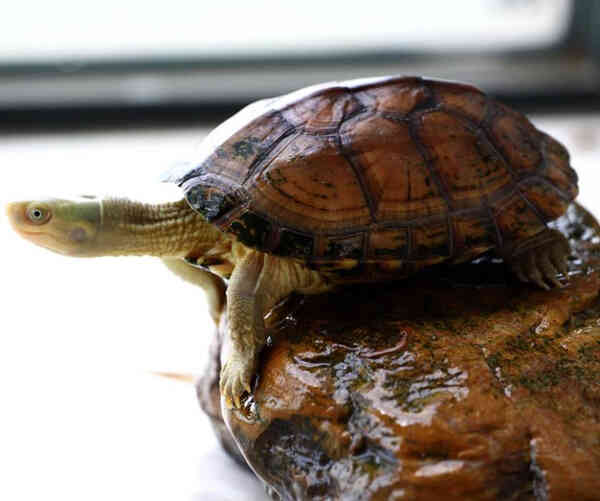
Protection suggestions
Make full use of the power of media at all levels, vigorously publicize the knowledge of protecting the environment and wild animals, and enhance the concept of the rule of law.
Strengthen fishery management. There must be laws, violations must be investigated, and capture is strictly prohibited.
It is recommended to apply for the yellow-throated turtle to be included in China's national second-level key protected aquatic wild animals.
Protect and optimize the environmental quality to ensure its natural proliferation.
Develop artificial breeding to ensure the reproduction of the population.
Carry out artificial reproduction and release to supplement the number of wild populations.



